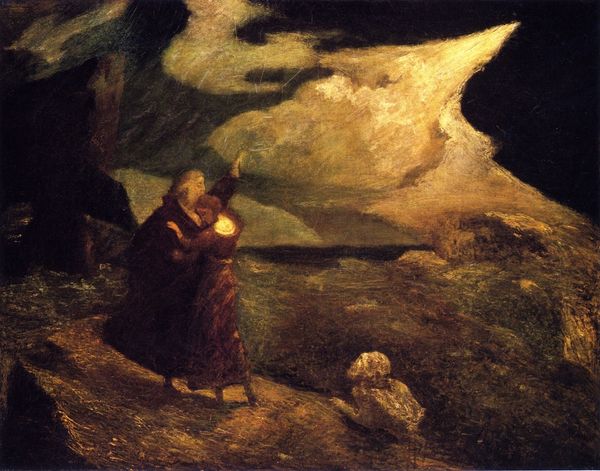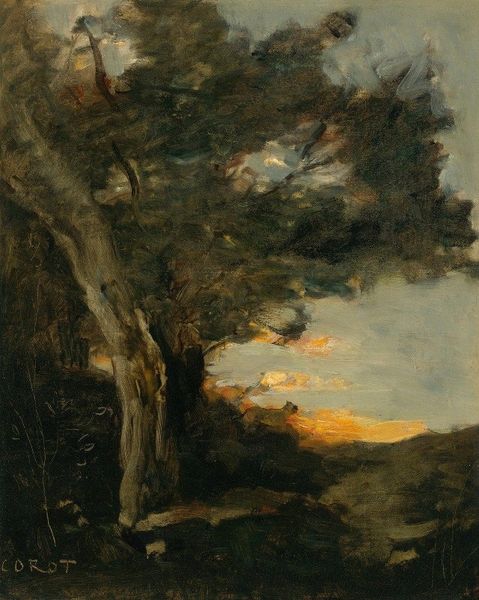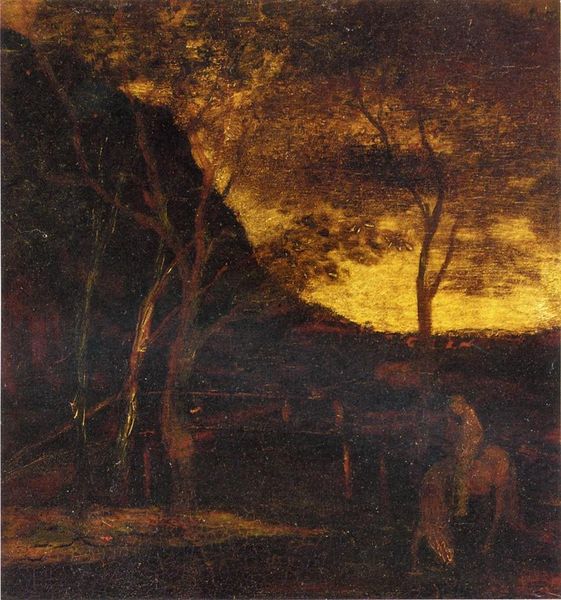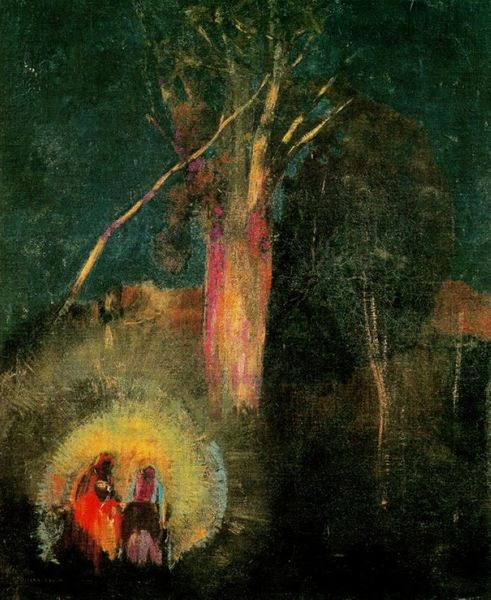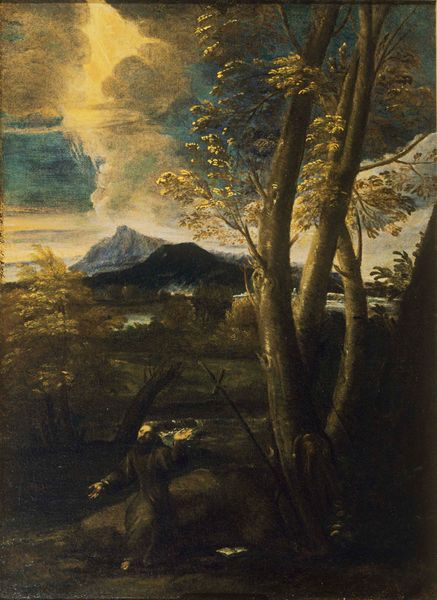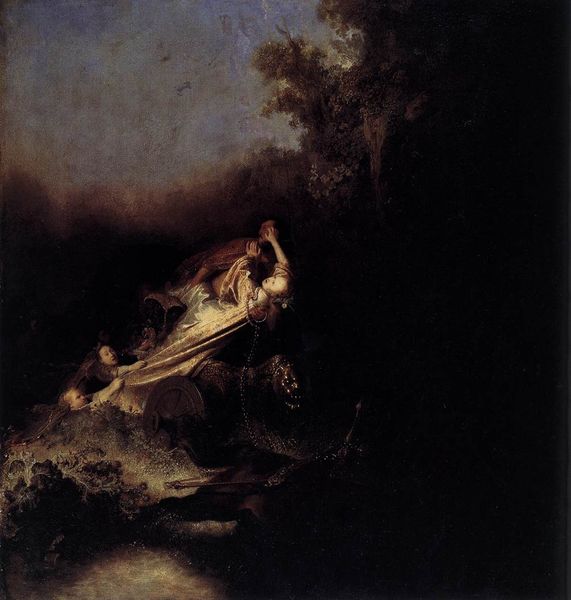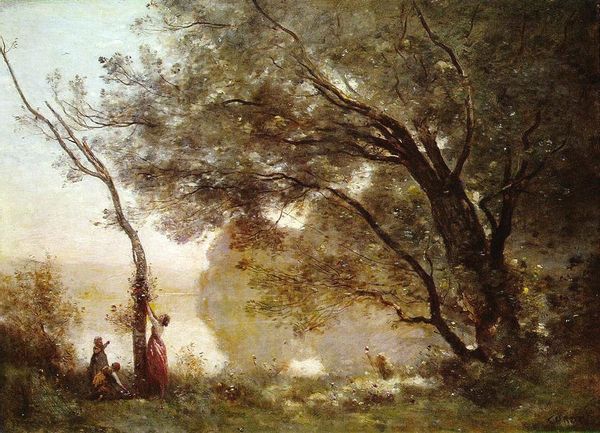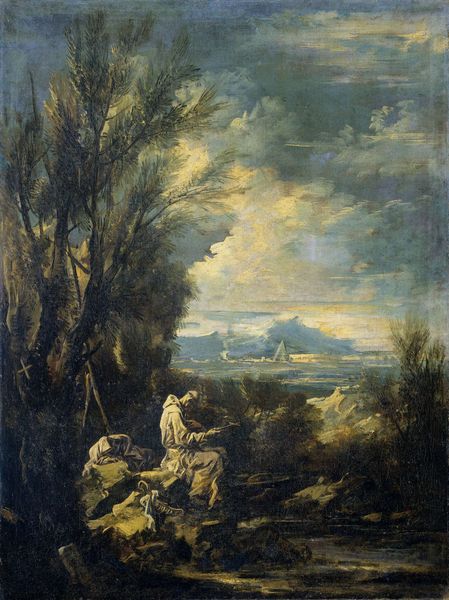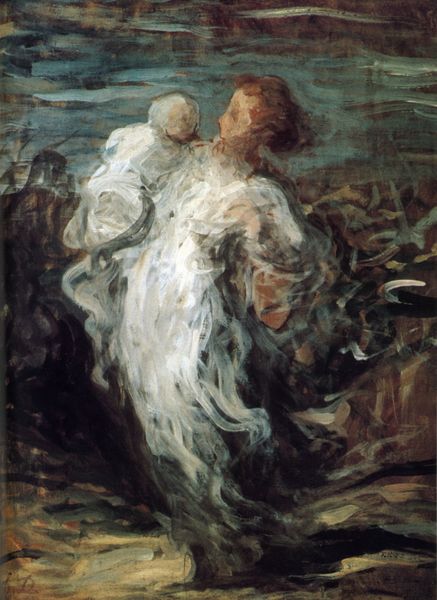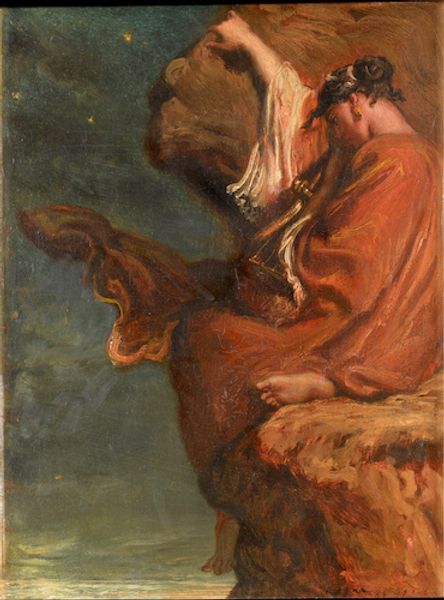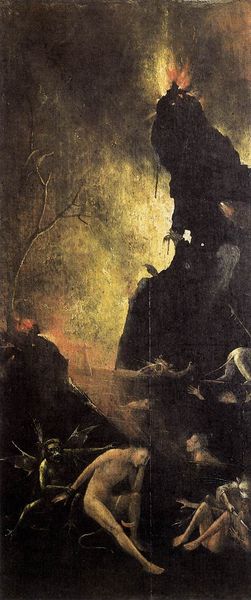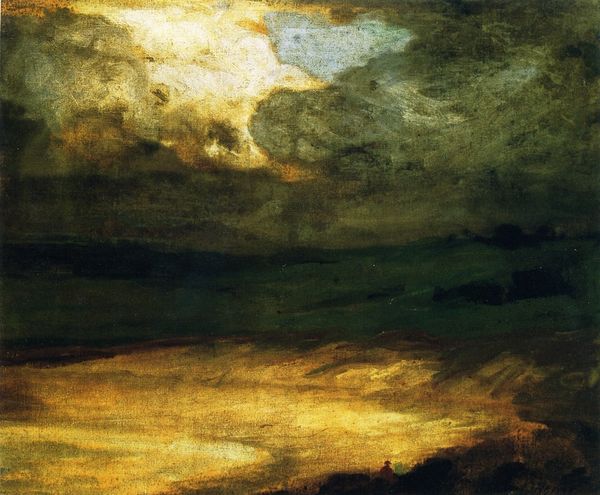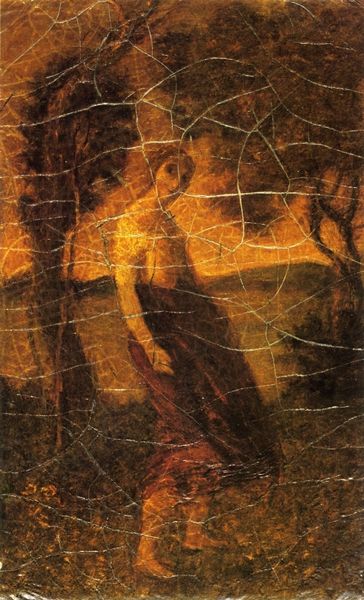
#
abstract expressionism
#
abstract painting
#
impressionist landscape
#
possibly oil pastel
#
oil painting
#
jesus-christ
#
fluid art
#
acrylic on canvas
#
underpainting
#
france
#
christianity
#
painting painterly
#
watercolor
#
christ
Dimensions: 80 x 75 cm
Copyright: Public domain
Editor: This is Gustave Moreau's "Christ in the Garden," painted around 1880, and it's currently housed in the Musée National Gustave Moreau. It’s a really evocative oil painting, and the immediate feeling I get is one of intense isolation and melancholy. What formal elements stand out to you in this piece? Curator: The most striking aspect for me is the structural use of light. Notice how Moreau manipulates chiaroscuro, not just to illuminate the figure of Christ, but to create a deeply layered, almost theatrical space. The strong contrast enhances the drama but consider too the horizontal layering: the dark foreground giving way to lighter tones toward the sky, thus generating a pictorial depth. Editor: Yes, it almost feels like the darkness is pressing in on the figure. I’m curious about the composition too - what’s the effect of placing Christ so low in the frame, almost obscured by the landscape? Curator: Precisely. Consider the deliberate fragmentation: Christ is visually integrated with the dark undergrowth, the muted earth tones reinforcing his connection to the mortal realm, even masking the gold and luminosity of the halo. By doing this, Moreau elevates the landscape to the level of the protagonist, forcing us to read the environment as more than just a setting. Editor: So, the technique itself—the composition and lighting—serves to amplify the emotional weight of the scene? Curator: Precisely. It isn't merely about depiction; the formal strategies become active signifiers of the narrative. We're not just seeing Christ in the Garden; we are experiencing the profound isolation of His spiritual crisis. Editor: That’s a really interesting way of seeing how technique and subject matter can work together to create meaning. Thanks for your insight! Curator: Indeed. By attending to form, we are offered the structural components, as it were, by which we understand a painting.
Comments
No comments
Be the first to comment and join the conversation on the ultimate creative platform.
